08. Feb 2018 - DOI 10.25626/0080
Dr. Zofia Wóycicka is research associate at the Center for Historical Research at the Polish Academy of Science in Berlin. She obtained her PhD from the Polish Academy of Sciences with a thesis on the memory and remembrance of the Nazi concentration and extermination camps in Poland, 1944-1950. She worked at the Educational Centre of the Museum of the History of the Polish Jews in Warsaw (POLIN) and was an assistant professor at the Institute of History of the University of Warsaw. Between 2011 to 2015 she has been a curator at the House of European History in Brussels.
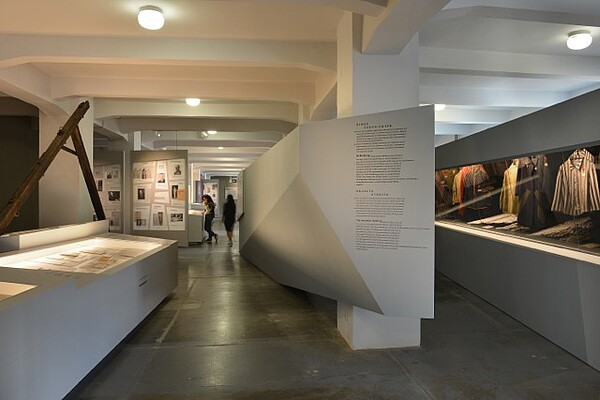
In the spring of 2016, a new permanent exhibition entitled “Buchenwald: Ostracism and Violence 1937 to 1945” was opened at the Buchenwald Memorial. The exhibition, occupying an area of 2000square meters, is set across three floors of the former depot, one of the few preserved buildings of the former concentration camp. To make the space more legible and visitor-friendly, architects from the Swiss design office Holzer Kobler Architekturen introduced an additional wall that cuts through all the floors and is set at an angle to the base of the building. For the visitor, this creates the impression that one is not inside an historical building but rather a phantom reflection of it. The purpose of this design solution, though perhaps not immediately apparent, is to create a tension between the past and the present.As if it was shifted and tipped, the camp building is turned against itself and the history from which it derives and that it symbolises”[1].
The exhibition is arranged chronologically and thematically. It is illuminated by daylight, and has a bright, neutral colour scheme. With a few exceptions, it does not make use of multimedia; the narrative primarily relies on artefacts. The exhibition begins on the ground floor with a prologue, which takes the form of an audio-visual animation showing the rise to power of the National Socialists and the social and political transformation of Germany in the 1930s. Next, visitors enter the first and second floors, where the history of the camp from its creation in 1937 until its liberation in the spring of 1945 is described in four chapters: “National Socialism and Violence” (1937–1939); “War and Crime” (1939–1942); “Total War” (1943–1945); and “The Final Months” (1945)[2]. The exhibition ends with an epilogue on the post-war fate of former inmates and on how Nazi crimes were dealt with in East and West Germany. Each chapter of the exhibition is thematically arranged and explores various aspects of camp life. These include: working and living conditions within the camp; the prisoner hierarchy and the role of prisoner functionaries; prisoner solidarity and the camp resistance movement; the SS staff; and the contacts between the camp and the outside world.
Buchenwald is located in the former GDR, and the first exhibition documenting the history of the camp during the years 1937–1945 was opened in 1954. Its purpose was purely propagandistic, and it mainly served to legitimise the rule of the Socialist Unity Party of Germany (SED), also known in English as the East German Communist Party[3]. The first exhibition focused on the history of the international resistance movement within the camp, which was dominated by German communists, and sought to locate within that movement the founding myth of the German Democratic Republic. In 1958, on the slopes of Ettersberg Hill, the so-called Buchenwald Monument was unveiled. This massive memorial, preserving in bronze and stone a blatantly heroic image of the history of the camp, established Buchenwald’s position as the central place of remembrance in the GDR.
Although certain cosmetic changes were made in the 1980s, the central message of the permanent exhibition essentially did not change prior to the collapse of the GDR. It was not until 1995 that a new exhibition devoted to the history of the camp was opened in Buchenwald. Two years later, a separate, much more modest exhibition came into being about the fate of prisoners of the Soviet Special Camp that operated in Buchenwald in the years 1945–1950. In terms of form and content, both exhibitions signalled a radically new approach, for they attempted to deal not just with Buchenwald’s Nazi past, but also with its communist legacy. They generated much controversy and became an important voice in the debate on how a united Germany should deal with its dual Nazi and communist past.
Both exhibitions were purely documentary in character, which was also reflected in their arrangement. No attempt was made to stage the past. The display cases of the exhibition devoted to the history of Buchenwald during the Nazi period resembled heavy steel cabinets of the kind used for storing archive materials—the contents could only be viewed through a glass aperture. This was meant to give visitors the sense that one could never know ‘how things really were’ and that, at best, one could try to reconstruct the past on the basis of available (often incomplete) sources. Furthermore, the exhibition was almost completely devoid of a ‘museum voice’, which meant that visitors had to build their own image of the past using pre-selected documents and evidence.
The Buchenwald exhibition of 1995 was one of the leading and most radical examples of an exhibition style based on ‘argument and documentation’ developed in (West) German museums, and especially in places of remembrance related to National Socialism, in the late 1980s and early 1990s.[4] Its authors did not want to replace the old propagandistic exhibition with a new authoritative historical narrative that could be seen, particularly by citizens of the former GDR, as yet another attempt at indoctrination, this time à rebours. In addition, not enough research had been done on many aspects of the history of the camp, which made it difficult to tell the story in a comprehensive and unambiguous way. For many, the exhibition was a model example of how a united Germany should deal with its Nazi (and communist) past. Critics, however, accused it of being hard to comprehend. Moreover, they claimed that it was not suitable for young people, who were (and who remain) a statistically significant group of museum-goers, and that in certain respects the exhibition left too much freedom for interpretation.
During the last twenty years, the director of the Buchenwald and Mittelbau-Dora Memorials Foundation, Volkhard Knigge, and his colleagues also created a new permanent exhibition at the former Mittelbau-Dora concentration camp (2006) as well as several major temporary and touring exhibitions, including “The Engineers of the ‘Final Solution’. Topf & Sons – Builders of the Auschwitz Ovens” (2005- )[5], “Gulag: Traces and Testimonies 1929-1956” (2012- )[6], and “Forced Labor. The Germans, the Forced Laborer and the War” (2010- ). All these exhibitions were documentary in character, but they differed considerably in terms of narrative style and arrangement. Knigge’s team experimented with various forms of exhibition design, modifying their approach based on previous experience and adapting it to changing visitor expectations.
After more than two decades, the need for a new permanent exhibition in Buchenwald had become obvious. Forms of presentation and the visual habits of museum-goers had changed, and many new discoveries had been made about the history of the camp. Researchers had been given access to, among others, the files of the camp administration of KZ-Buchenwald, kept in the Archives of the International Tracing Service in Bad Arolsen, which contained a wealth of valuable information on the operation of the camp and the life of inmates.[7] The collection of souvenirs received from former prisoners and items found during archaeological work carried out in the camp and its sub-camps had also grown considerably.
Let us compare the old and new exhibitions and take a look at how the displays created by Knigge and his team have evolved over the past two decades.
In terms of arrangement, the new exhibition is considerably less ascetic than the previous one. It is true that the staging one sometimes encounters at narrative museums nowadays is absent, there are almost no multimedia presentations, and no attempt has been made to build an atmosphere using lighting effects or colour. But compared to the old exhibition, which was very stark and raw, the new one is much ‘nicer’ and more ‘pleasant’, and sometimes appears slightly overdone aesthetically. This is the impression one gets, for instance, when viewing the freshly washed and ironed prisoner uniforms, which are shown against a black background in an illuminated display cabinet, recalling the way in which ceremonial dress from the Napoleonic era is often presented in military museums. Another example is to be found in the epilogue of the exhibition, where the showcases resemble the white wings of a glider—symbolism that may not be immediately apparent to the average visitor.
The new exhibition has a much more diverse exhibition space and offers different visiting routes as well as different ways of exploring the past. Thus, we find traditional showcases where the story is told by means of original objects from the camp—artefacts, photographs, archive film, official documents, and quotations from witness accounts—accompanied by explanatory text. Another element is the huge display cabinets filled with prisoner belongings: striped uniforms, mess tins, and personal items. These cabinets are based around three themes: Depersonalisation and Homogenisation, Undernourishment and Hunger, and Self-preservation. They are separate from the main exhibition and combine an educational and commemorative function. Personal stories related to individual exhibits make it easier for the visitor to empathise with the camp prisoners. For instance, in one of the showcases we find wooden toys made by Otto Roth’s fellow prisoners for Roth’s son, who was not an inmate himself, or a small symbolic gravestone made by the Yugoslav prisoner Bernard Smrtnik to commemorate his two brothers who perished during the war.[8] The final element concerns the life stories of nearly one hundred prisoners, which can be accessed via special listening stations placed throughout the exhibition. Various categories of victim are represented here—from prisoners persecuted for racial or political reasons to ‘asocials’ and ‘habitual criminals’.
The third important innovation is that the exhibition is coherently arranged across multiple levels and offers a distinct ‘museum voice’. It is divided into clearly marked chapters and thematic fields. The introductory texts are likewise multi-layered, and even the captions under the exhibits contain an element of interpretation. Unlike in the old exhibition, the ‘museum voice’ accompanies visitors throughout the tour, helping them to absorb the content. Indeed, the underlying assumption of the exhibition is that visitors need not have any prior historical knowledge.[9] It is meant to be understandable and interesting for school pupils and university professors alike.
Several new themes have been introduced into the content as well. The section on the genesis of National Socialism and the installation of the Nazi regime is now more elaborate and explicit. Emphasis is placed on the idea that the collapse of democracy and the rule of law opens the way to persecution and genocide. The audio-visual presentation in the prologue begins with a quotation from Victor Klemperer’s diary: "It’s shocking how all opposition has disappeared, how easily everything collapses."[10] Today, in the face of rising nationalism in Europe and beyond, this sounds like a warning. In January 2017, the Museum Administration banned Björn Höcke, head of the Thuringian branch of the Alternative for Germany (AfD) party, from entering Buchenwald. A few days earlier, Höcke had delivered a speech in Dresden calling for a 180-degree turn in German politics of history.[11]
One of the most important and more provocative themes of the exhibition is the relationship between the camp and its surroundings.[12] The exhibition shows, in a vivid way, that Buchenwald was not an isolated universe; on the contrary, like other concentration camps in the Reich, it was an immanent part of the Volksgemeinschaft. Weimar artisans and merchants provided services to the camp and profited from it greatly; prisoners were a cheap source of labour for local businesses, and the camp SS cooperated with industry and with numerous state and academic institutions all over the Reich. For example, presented at the exhibition are photographs, memoranda, and index cards from racial studies conducted from 1938 onwards on Romani inmates of Buchenwald. The research was carried out by Robert Ritter, head of the Racial Hygiene Research Unit at the Reich Office for Public Health (Rassenhygienische Forschungsstelle am Reichsgesundheitsamt), with the approval of the SS. There is also the correspondence between the camp doctor and a Weimar manufacturer of hernia belts concerning the purchase of eight such belts for the prisoners. These and other examples show that the local poulation not only knew, but also approved of what was happening behind the barbed wire of the concentration camps.
Compared to the old exhibition, another major novelty is that there is much more focus not only on the victims but also on their persecutors. The latter are not depicted in the usual abstract way as simply Nazis or SS officers, as the embodiment of evil, but rather as real people of flesh and blood. The exhibition presents the biographies of the perpetrators—from the camp commandant, through the camp doctor, to the rank-and-file guards and female attendants. Also mentioned are people who were not members of the camp staff, such as company directors who exploited the labour of prisoners or, as mentioned above, 'scientists' who conducted research on inmates. The work and leisure activities of the SS staff is likewise shown. The curators have tried to describe the way of thinking and motivations of the SS staff and how they were perceived by prisoners of the camp.
The greater emphasis placed on the relationship between the camp and the outside world, on the biographies and motivations of the perpetrators, and on the mechanisms of violence, reflects the latest historical research on National Socialism.[13] There is, however, also an element of didactic reflection to this, for it raises the question of whether concentrating solely on the victims and their suffering (which has often been the case hitherto) is enough to prevent genocide and crimes against humanity from happening in future. Does this method of presentation not make it too easy to identify with the victims? Had we lived in the 1930s or 1940s, we might just as easily have found ourselves on the side of the bystanders, or even the perpetrators. From the point of view of shaping attitudes, understanding the social and political conditions that allow such crimes to occur and the mechanisms that lead to an escalation of violence is just as important as empathy for the victims.
This is not to say, however, that the exhibition is dominated by the perpetrators. On the contrary, the Buchenwald inmates are also shown not as passive victims of violence but as acting beings. Visitors to the exhibition learn about the social stratification of the prisoner community and the fact that a prisoner’s chances of survival depended upon his position within the camp hierarchy. A lot of space is devoted to prisoner solidarity and prisoners’ attempts to maintain personal dignity as well as to the resistance movement within the camp. In no way does this lead to the glorification of victims, however. Indeed, the diverse attitudes of prisoner functionaries (camp seniors, block seniors, and kapos) are revealed, as are the ambivalent actions of the International Camp Committee, dominated by German communists, whose members often sacrificed the lives of other prisoners in order to save their protégés or prominent camp inmates. This is what happened to the three-year-old Stefan Jerzy Zweig, the protagonist of Bruno Apitz’s novel Naked Among Wolves, who was removed from a list of children and adolescents destined for Auschwitz and instead replaced with a Romani boy.[14] Still, even someone familiar with the subject may be surprised at the scale and organisational complexity of the camp resistance movement and prisoners’ self-help. One of the exhibits, for example, is a hand-painted poster urging fellow prisoners to donate their Red Cross parcels to the needy.[15] In this way, for better or for worse, the victims regained agency.
The last aspect of the exhibition that I wish to draw attention to is its multi- perspective approach. It presents different ways of perceiving and interpreting the reality of the camp. This is most in evidence in the chapter concerning the liberation of the camp on 11 April 1945. In the GDR, the official line was that members of the International Camp Committee liberated the camp themselves. After 1990, this interpretation was rejected as communist propaganda. Today we know that the Committee was indeed preparing to take the camp by force, but the leadership delayed its decision for fear that an armed uprising would be crushed by the SS. However, efforts were made to delay the evacuation of the camp for as long as possible. Armed resistance only began after most of the SS had fled and the first American tanks appeared in the vicinity of the camp. The present consensus is that there was a dual liberation—from within and from without.[16] So how should this story be told in a way that does justice to the members of the camp resistance and at the same time does not spread false myths? The curators have decided to reconstruct the final course of events on the basis of the—sometimes contradictory—accounts of witnesses, members of the International Camp Committee, rank-and-file prisoners, and US soldiers.
Although the new exhibition in Buchenwald has retained its existing documentary character, Knigge and his team have renounced the most radical solutions of the 1990s. Thanks to the introduction of a clear, multi-layered narrative structure and a clear museum voice, the visitor is not simply left alone with the historical material, but is instead led by hand through successive chapters of the exhibition. Paradoxically, this does not simplify the message; in fact, it allows for the inclusion of many new themes, which visitors would not have been able to absorb under the old layout. Above all, however, the new exhibition celebrates original artefacts. It shows that, if presented in the right way and with proper commentary, these artefacts have a much greater power of persuasion and are able to influence the imagination and emotions of visitors far better than even the best staging or multimedia presentation.
Translated by Jasper Tilbury
Zofia Wóycicka, Buchenwald Revisited. In: Cultures of History Forum (08 February 2018), DOI: 10.25626/0080.
Copyright (c) 2018 by Imre Kertész Kolleg, all rights reserved. This work may be copied and redistributed for non-commercial, educational purposes, if permission is granted by the copyright holders. For permission please contact the editors.
This is an edited version of the review that appeared in Polish under the same title in: Zagłada Żydów. Studia i Materiały, 13, (2017): 829-839.
Official website of the Buchenwald memorial
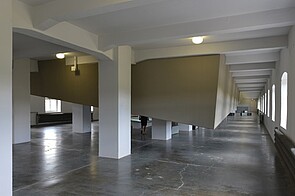
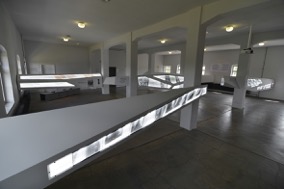
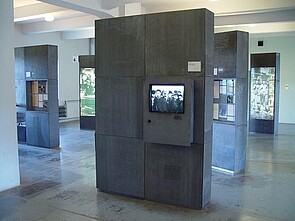
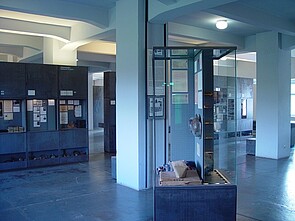
Hans Gutbrod · 30.05.2023
Sebald's Path in Wertach -- Commemorating the Commemorator
Read more
Matěj Spurný · 31.10.2021
The Colour of Compromise: The 'Documentation Centre for Displacement, Expulsion, Reconciliation' as ...
Read more
James Krapfl and Andrew Kloiber · 28.05.2020
The Revolution Continues: Memories of 1989 and the Defence of Democracy in Germany, the Czech Republ...
Read more
Sabine Volk · 11.03.2020
Commemoration at the Extremes: A Field Report from Dresden 2020
Read more
Gespräch · 30.11.2019
"In Auschwitz hat sich die Wirklichkeit entlarvt" - ein Gespräch mit Daniel Kehlmann
Read more
Get this article as PDF download (including pictures).